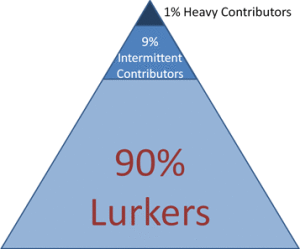I spotted something interesting while walking to lunch, took a photo with my camera, and then took a photo with my phone so that I could post it to Twitter immediately.
Then I thought: why?
- Is it breaking news?
- Is it going to be any less interesting if I wait?
- Would it add to an in-progress conversation?
- Really, is there any reason that posting it now would be better than posting it later?
And on the flip side:
- Does the photo quality matter?
- Does it need more explanation than I can provide at this time?
I decided that in this case, it was self-explanatory, and neither the timing nor the quality made much difference. But since I had the better photo, I might as well wait until I could upload it. (Sometimes the photo quality really matters, though: my phone’s photos of that rainbow cloud just weren’t worth the effort, so it’s a good thing I rushed back to the office for a better camera.)
There was a time when if I wanted to post a photo online, I had to finish a roll of film, send it to a photo lab, wait for them to develop it, and then scan the print. I really like not being limited by that, whether it’s because I’m posting about a current event like Comic-Con or an election, or just because I think something’s fantastic (or hilarious) and really want to share it.
Sometimes it’s really useful to be able to post photos online instantly. Other times, it’s worth asking: Is now better?
A bit of craziness: I wrote this post in June 2010, about this sign. Then I decided it needed a bit of work before I posted it…and forgot about it. Interestingly enough, the post is still just as valid as it would have been a year ago, and it demonstrates that sometimes, now isn’t better, even if it’s not worse.
Of course, it also demonstrates an advantage of posting immediately. There’s no chance of forgetting about it that way!
